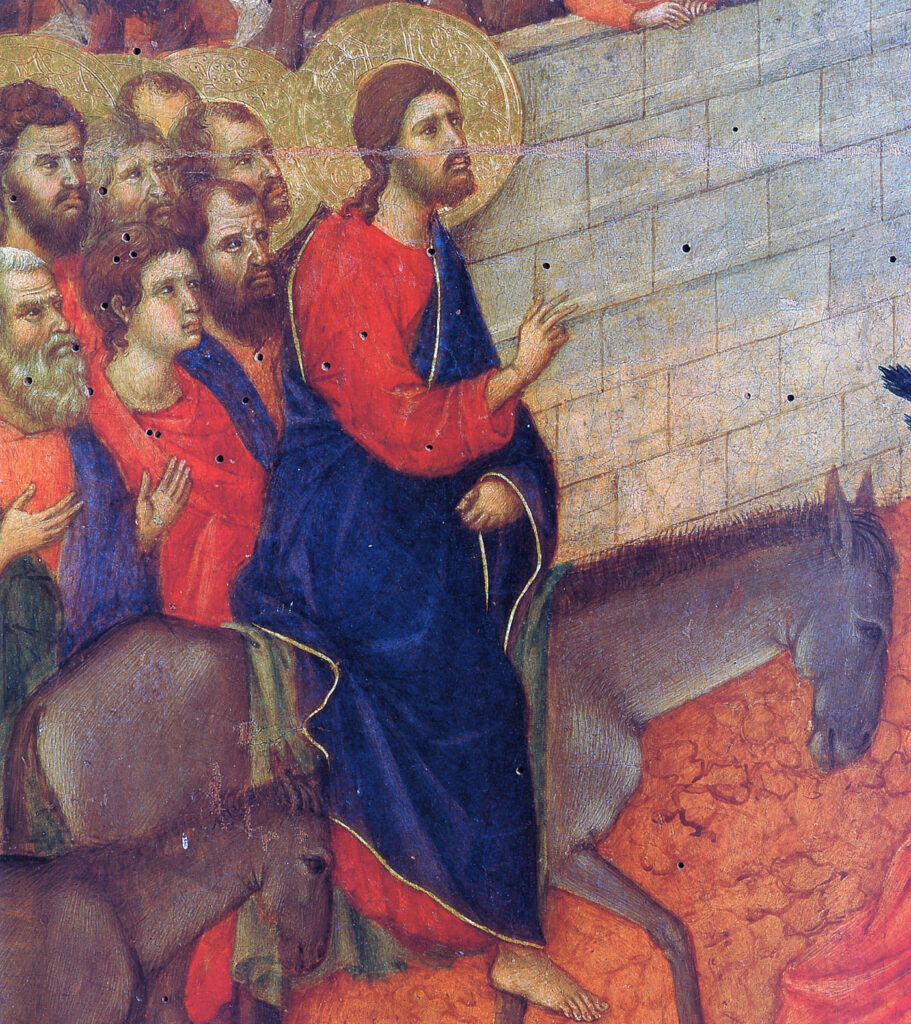This cantata is one of several that Bach composed for the Sunday before Lent, the 40-day period that leads to Holy Thursday. Given that there was no music in church during Lent, this cantata was probably the last one presented in Leipzig before the performance of St. Matthew Passion on Good Friday of 1729.
The Gospel for this Sunday is Luke 18: 31-43, in which Jesus tells the apostles that they will all be going to Jerusalem so that his Passion can be fulfilled. Picander, author of the libretto, picks up on this text and creates a mini-passion. The narrative arc starts with Jesus’ announcement to the disciples (movement 1) and the faithful’s reaction; and then traverses through the believer’s resolution to follow Jesus (mov’t. 2), their grieving (mov’t. 3) and their acceptance (mov’t. 4). The libretto wraps up with a Passion chorale by Paul Stockmann from 1633 (mov’t. 5).
The cantata is scored for four solo voices, with no choral writing except for the closing chorale. Two of the movements are set up as dialogs. The first one, with several instances of dramatic word-painting, presents the bass as Jesus quoting the Gospel text in an arioso, and the Alto as the soul of the believer who reacts to Jesus’ announcement. Jesus’s voice is accompanied by a basso continuo, while the alto’s interjected recitatives are “accompagnati”, i.e. harmonized via the strings of the orchestra.
The next movement, an alto aria with continuo, is also a dialog as it overlaps a chorale melody by Hans Leo Hassler, intonated by the soprano, which Bach used extensively in the St. Matthew Passion.
A recitative for the tenor follows, articulating feelings of grieving and resignation, leading to the “high point” of the cantata – a bass aria with oboe obbligato which opens with the words also found in the Pasison text – “Es ist vollbracht” – it is accomplished. Its middle section (on the words “Now I will hasten”) shifts to a livelier tempo with long runs of sixteenth notes (word painting) and incorporates a dialog with the first violin. Just like in the homonym aria in the St. John Passion, the text and the music return to the original plaintive motif to close the movement.
The final movement is a chorale text by Paul Stockmann, set in simple 4-part harmonization to a tune that also appears in other cantatas and several times in the St. John Passion.
